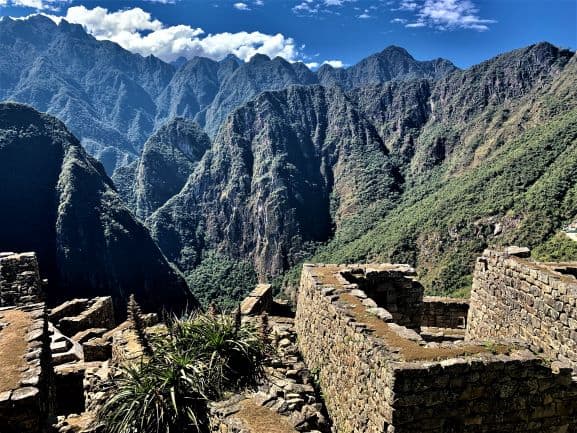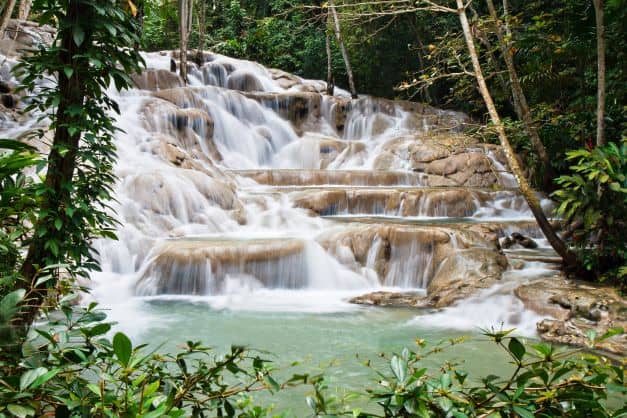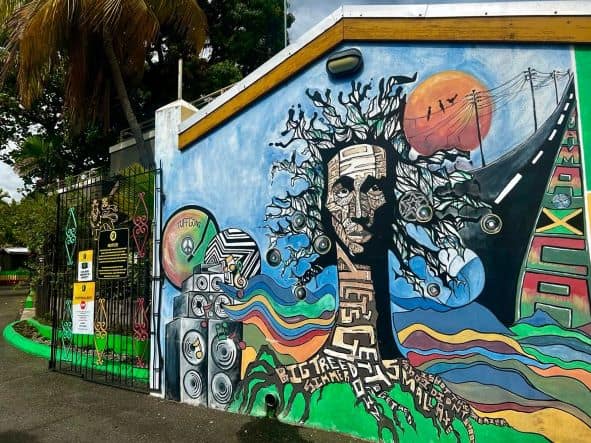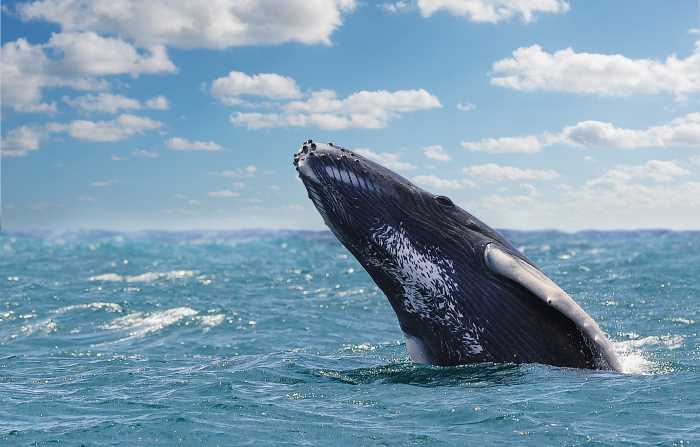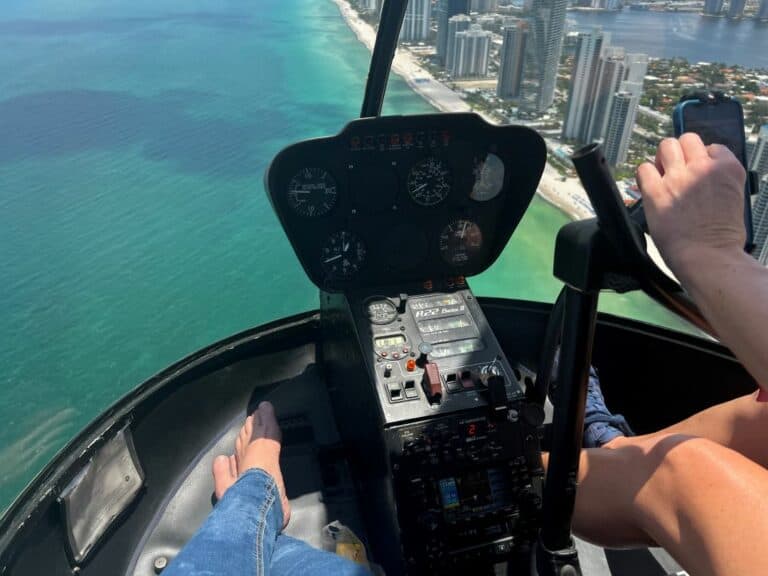17 Incredible Famous Landmarks In Peru That Are a Must-See! (2024)
Peru has such an exotic ambiance, a country steeped in history, culture, and famous natural wonders. Truly a bucket-list destination, which is why I have compiled a list of 17 must-see famous landmarks in Peru that will take your breath away!
I traveled in Peru for over a month, and as Peru is HUGE, this trip only allowed me to explore some of them. Like hiking the spectacular Inca Trail deep into the Peruvian mountains, which was absolutely incredible.
Meanwhile, let us make plans and get ready to discover Peru’s most iconic destinations, taking us on a journey through its captivating past and stunning present.

The Captivating Historic Treasure Chest Of Peru
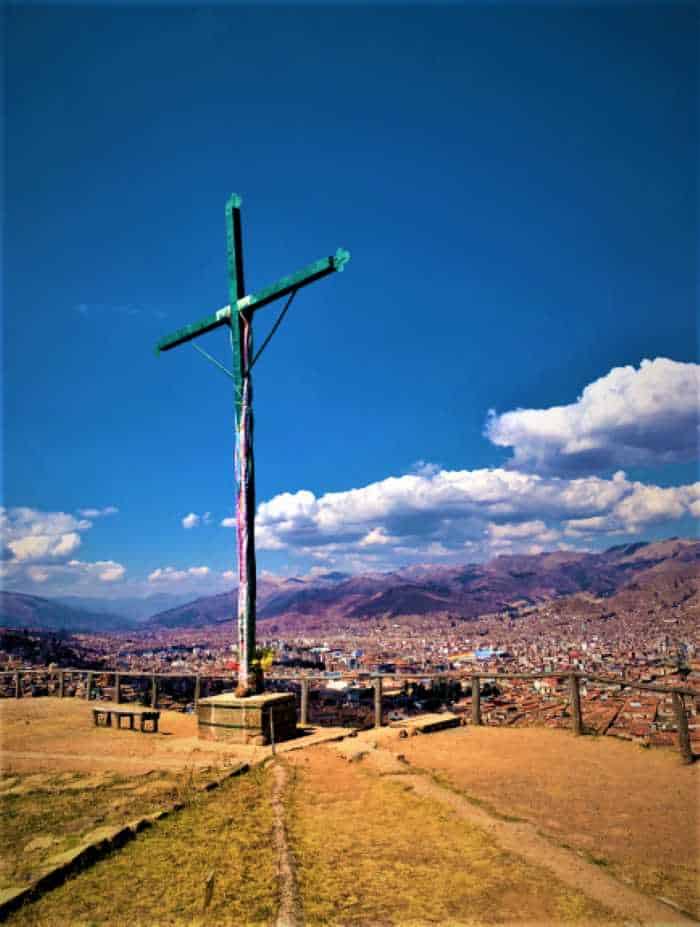
With its rich tapestry of ancient civilizations and awe-inspiring landscapes, it’s no surprise that Peru is a coveted destination for travelers.
When planning a trip to Peru, you should consider that the seasons in Peru might be a little different from what you are used to.
Summer in Peru starts in November and ends towards the end of March, and within this time frame is the dry season in December and January. And our summer in the US and Europe is winter in Peru.
With that important factor in mind, you can go ahead and start planning. But with so many epic landmarks in Peru to choose from, where do you even start?
1. Breathtaking Machu Picchu

Not surprisingly, at the top of almost every adventurous traveler’s list when visiting Peru is the breathtaking Machu Picchu.
This anciant Incan city with intricate architectural stonework (it is incredible how they did that centuries ago) and stunning views, Machu Picchu truly deserves the title of a wonder of the world.
To get to Machu Picchu, you can walk the famous Inca Trail, a 26-mile hike that takes a minimum of four days through stunning mountain landscapes.
I walked the Inca Trail in 2019, and it was AMAZING!
You will explore the ruins along the path, and, at the same time, learn about the fascinating history of the Incan Empire.
The whole area has been incredibly well-preserved, maintained, and restored over the years, making it a truly unique experience.
Check out this top-rated full-day trip from Cusco to Machu Picchu if you want a done-for-you experience!
If you prefer to do things your own way, trains and buses are also available.
If you want to go about it on your own, check out the Inca Rail or the Peru Rail, which both have stations in Cusco and will take you to the starting point in Aguas Calientes, the nearest station to Machu Picchu.
From there, you will take a 25-minute bus ride up the steep mountainsides to reach the ancient city. If you have decided to visit Machu Picchu on your own, you can check out how to get tickets here!
Take it from me: if you are going to Peru, Machu Picchu is a must-see destination, and its beauty and significance will leave a lasting impression on you if you decide to go!
The Inca Trail To Machu Picchu
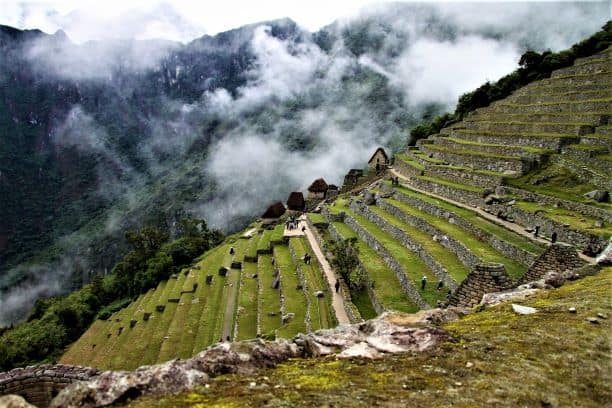
📍 I only recommend services I love and trust on this travel blog! 🏆
If you use my affiliate links to make your bookings, the service provider will compensate me for my work at no extra cost to you! Thank you!
The Machu Picchu ruins in the mountains are an impressive sight even if you arrive by train or bus, but there is something almost magical about walking the ancient Inca Trail!
I feel that I can say that with some leverage, as I did this 4-day Inca Trail hike a few years ago, and it will stand as one of the most memorable and awe-inspiring adventures I have had.
Imagine arriving at Machu Picchu and walking through the Sun Gate at the exact moment the first rays of the sun hit the mountains and the ruins after trailing the mountain paths centuries after the Incas did!
There are a variety of ways to make the Inca Trail, and hikes have different routes and durations, like the very famous Salkantay trek.
An experience that is difficult to describe in full, but I have tried my best in this article about the whole amazing 4-day hike if you want to read more about it.
The Peruvian town that is the best starting point for trips to Machu Picchu and the Sacred Valley of the Incas is Cusco.
Also read: Ultimate Inca Trail Packing List From An Avid Hiker
Here are three other top-rated hikes that all end up in Machu Picchu.
2. The Sacred Valley of the Incas
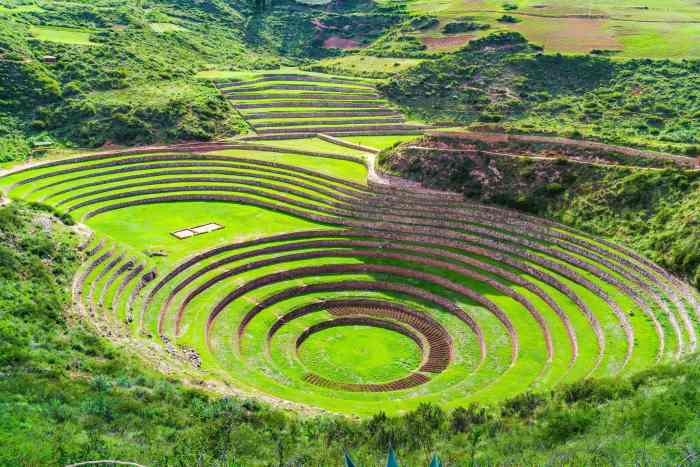
You definitely cannot experience the beauty of Peru without exploring the Sacred Valley of the Incas.
This region, located in the Andean highlands, includes several significant archaeological sites, not very far away from the Machu Picchu.
The Sacred Valley of the Incas was once the heart of the Inca Empire and continues to be a sacred place for the Peruvian people today.
You find the valley is situated between the towns of Písac and Ollantaytambo.
Písac is home to one of the largest markets in the region, where visitors can find handcrafted textiles, jewelry, and ceramics. Ollantaytambo is known for its Inca ruins and stunning views of the valley.
The valley is also home to the town of Chinchero, where you can learn about traditional Peruvian weaving techniques and explore Inca ruins. Chinchero is known for its colorful textiles and has a beautiful colonial church built on Inca foundations.
The Sacred Valley is an essential stop on your way to Machu Picchu, too. It’s easy to reach by train or bus from Cusco, and there are several tour companies that offer day trips to the region.
Here are some of the top-rated tours you can check out!
- The Ultimate Sacred Valley One-Day Trip
- Two-Day Tour Sacred Valley & Machu Picchu From Cusco
- 4-Day All Included Sacred Valley, Machu Picchu, and City Tour
3. Choquequirao
After exploring the world-famous Machu Picchu, the Sacred Valley of the Incas, and Cusco, make your way to the remote site of Choquequirao!
Choquequirao is sometimes referred to as “the other Machu Picchu”; it is around three times as big, and you can only get there by doing a multi-day hike!
The effort is well worth it for the stunning views and deep cultural significance but be advised this trek is quite strenuous. You need to be “fit enough” to do it.
Expect to walk around 7-10 hours a day on a trek to Choquequirao.
This mountain gem high in the Andes was built by the Incas way back in the 15th century. The trek to get there may be challenging, but it is worth it for the breathtaking views and fascinating history.
The ruins include a series of terraces, plazas, and buildings, showcasing the everyday life and culture of the Incan people.
Choquequirao is less well-known and harder to reach than other popular landmarks in Peru. But if you love hiking and a challenge, it is an ideal destination for those seeking a quieter, more authentic experience!
4. Rainbow Mountain

Located in the Andes of Peru, Rainbow Mountain is a geological wonder that has become increasingly popular in recent years due to its unique and vibrant colors.
From deep reds to bright yellows and greens, the mountain’s colorful stripes are the result of mineral deposits that have been exposed over time.
To reach Rainbow Mountain, you must embark on a trek that can take up to six hours round trip. While the journey is not for the faint of heart, the views along the way are stunning, with snow-capped peaks, rushing rivers, and lush valleys.
Once you reach the top, the breathtaking views of the surrounding landscape make the trek completely worth it.
The mountain holds significant spiritual and cultural importance to the Andean people, who have been living in the region for thousands of years.
Today, visitors can learn about the customs and beliefs of the local communities through guided tours and cultural experiences. There are various ways to get to Rainbow Mountain in Peru; pick the one that suits your travel style!
The next ancient wonder you should explore is the mysterious Nazca Lines, which are best seen from above.
5. The Nazca Lines

The famous evidence of ancient engineering is that the Nazca Lines are situated around 13 hours’ drive southwest of Cusco (!), or around 6 hours south of Lima, close to the Pacific coast!
Or, you can fly there and just admire all the different ancient patterns from above!
These mysterious geoglyphs (land or rock art), were etched into the earth thousands of years ago over large areas, and because of their vastness, it is difficult to get a good view of its beauty from the ground.
Recent research suggests that these lines were constructed in relation to water (a scarce commodity in Peruvian mountains and deserts), but not to actually find water!
Instead, they seem to be part of a ritual to please the gods in hopes of attracting life-giving rain to the region. Either way, it’s an impressive piece of both art and engineering.
Here are three different ways to reach the Nazca Lines in Peru that other travelers give 5 stars.
- Nazca Lines Scenic Flight Over 18 Formations
- Nazca Lines & Ballestas Islands Day-Trip Flight From Lima
- Two-Day Tour From Lima: Nazca Lines, Paracas, Huacachina
6. Chauchilla Cemetery
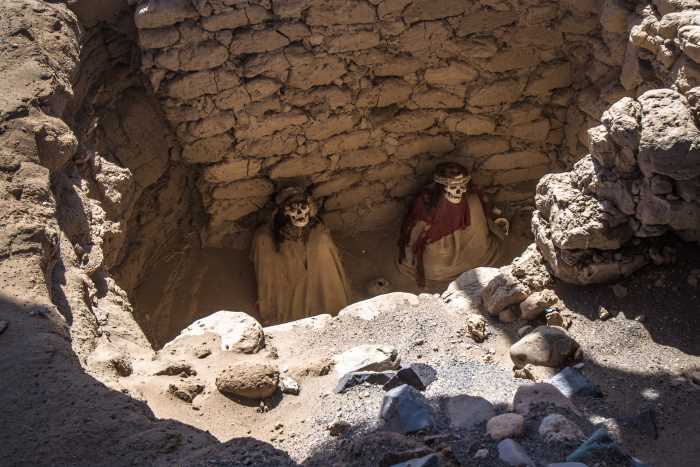
If you’re looking for a unique experience that delves into the history of ancient Peru, the Chauchilla Cemetery should be on your list of must-visit destinations.
Located in the Nazca Desert not far from the Nazca Lines area, this cemetery contains over a thousand mummified bodies and artifacts that have been preserved for over a thousand years.
The preservation of the bodies is due to the dry desert climate, which has allowed for the mummies to remain mostly intact.
You can actually walk through the rows of mummies and see the intricate funerary practices of ancient Peruvians, including the fine textiles and jewelry that were placed with the deceased.
As you explore the tombs, you’ll gain insight into how different cultures honored their dead and how those traditions evolved over time.
7. Kuélap
High up in the northern Andes, you find Kuélap, a fortified city and archaeological site that offers a glimpse of ancient Peruvian culture.
Built by the Chachapoyas people in the 6th century AD, the site features massive stone walls, underground passages, and hundreds of circular homes that once housed its inhabitants.
With fewer tourists around, travelers can freely explore the ruins and marvel at the ingenuity of the architects who built them.
Take a day trip here from Chachapoyas, or do a full-on experience of all the magnificent sights the region has to offer while you are “up here”!
- Kuelap Cable Car Day-Trip from Chachapoyas
- 5-Day Round Trip Kuelap, Chachapoyas, Gocta Waterfalls, Carajia & Quiocta
8. Ollantaytambo
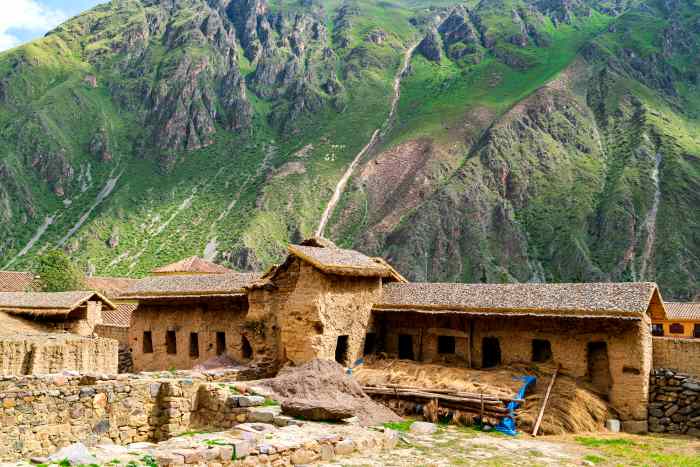
Nestled in the heart of the Sacred Valley, Ollantaytambo is a town steeped in history and culture.
Just like Kuélap, this ancient Incan settlement boasts impressive stone structures and intricate carvings that have withstood the test of time.
Ollantaytambo’s most prominent landmark is the Temple of the Sun, a massive fortress-like structure made of enormous stones that remain a mystery to archaeologists to this day.
But beyond the temple, visitors to Ollantaytambo can explore the town’s quaint cobblestone streets and traditional adobe houses, which have been preserved for centuries.
With easy access to the nearby ruins of Machu Picchu and the surrounding natural beauty, Ollantaytambo is a super popular destination for travelers.
Despite its popularity, the charming town manages to retain its authentic charm and remains a must-visit if you want to experience the heart of Peru’s fascinating culture.
9. El Brujo
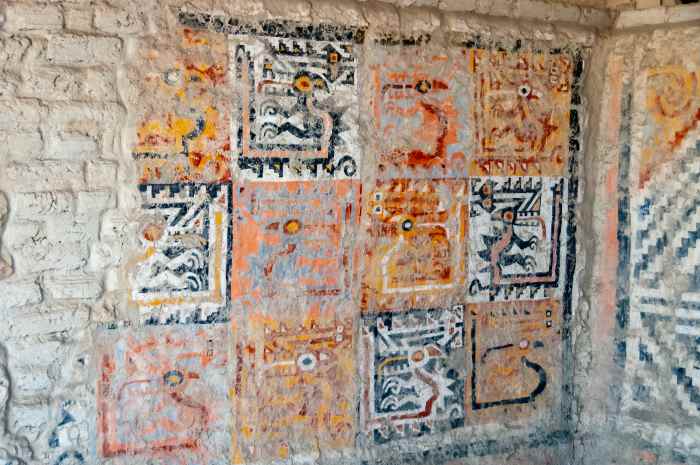
With its remarkable ruins and fascinating archaeological discoveries, this site will transport you back in time and give you a deeper understanding of Peru’s rich cultural heritage.,
El Brujo archaeological site, located in the northern coastal region of the country, is named after the Shaman (Brujo in Spanish) who was buried there.
The site is famous for its well-preserved Moche culture ruins that date back nearly two thousand years.
One of the most remarkable structures at El Brujo is the Huaca Cao Viejo, a truncated pyramid that stands 98 feet tall and was once adorned with incredibly intricate murals.
The central area of the pyramid features an open-air courtyard surrounded by various rooms, which are thought to have been used for ceremonial purposes.
While the Huaca Cao Viejo is the most prominent feature at El Brujo, the site also includes two other smaller pyramids and several other structures.
One of these structures is the Huaca Cortada, which is believed to have been used for public gatherings, and the other is the Huaca Prieta, which is said to be one of the oldest structures at the site.
As you wander through the site, you’ll encounter various artifacts, including pottery, textiles, and even human remains.
Get a glimpse into everyday life in the region centuries ago and a better understanding of the Moche people’s customs and traditions.
10. Chan Chan
The next stop on your Peruvian adventure is Chan Chan, an ancient city that offers a glimpse into the lives of the pre-Columbian Chimu people.
Spanning over 20 square kilometers, Chan Chan was once the largest city in South America and served as the political and administrative center of the Chimu culture.
What makes Chan Chan truly remarkable is its intricate architecture that showcases the advanced engineering and artistic abilities of the Chimu people.
The city is made up of nine walled palaces, each adorned with intricate carvings and friezes that depict scenes of daily Chimu life and religious beliefs.
You can explore the vast complex and witness firsthand the impressive feats of engineering that allowed the Chimu to flourish in the arid coastal desert region.
Guided tours are available, offering both historical and cultural perspectives on the fascinating ancient city.
11. The Moche Temples
A visit to El Brujo offers a profound understanding of the Moche culture.
Exploring the Moche temples gives you a chance to examine various details of Moche’s life, including pottery, textiles, and even human remains.
These findings offer insight into the everyday existence of people who lived in the region centuries ago, giving us a glimpse into the customs and traditions of the Moche culture.
These impressive structures are a testament to the Moche people’s impressive architectural and engineering talents, and they offer an unforgettable glimpse into the culture and history of northern Peru.
12. Islas Ballestas
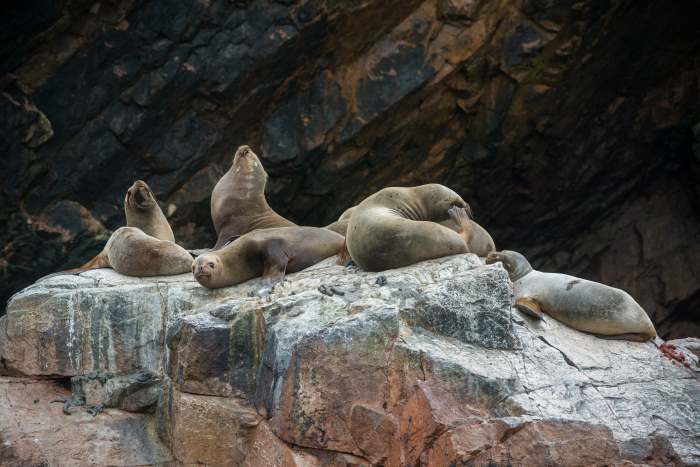
The Islas Ballestas, an island located just off the coast of Paracas, offer a unique opportunity to witness Peru’s incredible biodiversity up close.
The island’s wildlife is incredible; it is home to a large colony of sea lions, as well as a range of bird species, including Humboldt penguins, pelicans, and cormorants.
You can expect to be greeted by the loud barks of sea lions and the pungent smell of guano, which is harvested from the islands and used as fertilizer.
In addition to the wildlife, the Islas Ballestas offers breathtaking views of the Pacific Ocean and the wild, rugged coastline of Peru.
The rock formations, shaped by centuries of erosion and weathering, are a testament to the power of nature and the beauty that can emerge from it.
After returning from the islands, take a short drive south to the oasis town of Huacachina. This picturesque village is built around a natural lagoon and is surrounded by towering sand dunes.
It’s the perfect place to relax and soak up the stunning scenery of southern Peru before continuing on your journey.
13. Huacachina
After exploring the natural wonders of the Islas Ballestas, the oasis town of Huacachina offers a peaceful retreat to recover from the excitement.
The small village is situated around a natural lagoon where you can take a dip or just soak up the sun on its shores. However, the real gem of Huacachina is the towering sand dunes that surround the town.
If you feel adventurous, you can take a thrilling dune buggy ride or sandboard down the steep slopes for an adrenaline rush like no other.
As the sun sets over Huacachina, the sand dunes glow with a golden hue that’s truly breathtaking. The tranquil atmosphere and stunning scenery make it the perfect place to stop and relax.
14. San Francisco Convent
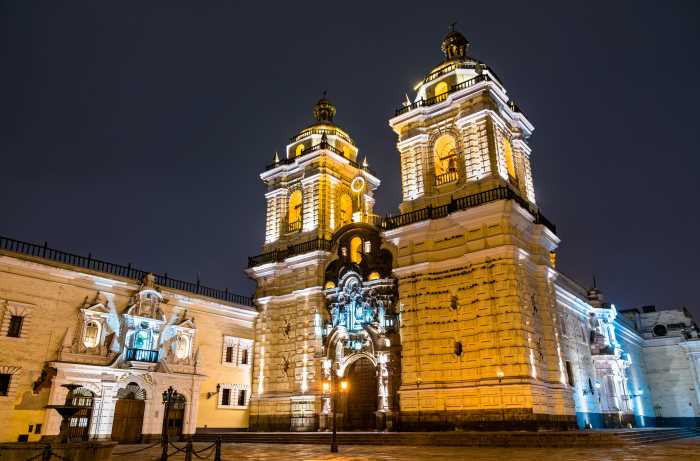
The San Francisco Convent in Lima is a historical and architectural wonder that should not be missed on any visit to Peru.
The convent, which was built in the 16th century, is considered to be one of the best examples of Spanish Baroque architecture in the country.
You can explore the stunning cloisters decorated with intricate tile work and the ornate church, which boasts an impressive collection of 17th-century art.
One of the highlights of the San Francisco Convent is its vast catacombs. Beneath the building lie the remains of an estimated 25,000 people, making it one of the largest cemeteries in the world.
Take a guided tour of the catacombs to learn more about the fascinating history of the site.
If you’re interested in history and architecture or just want to marvel at the beautiful design, the San Francisco Convent is a must-see landmark in Peru.
And with the next stop, the impressive Qorikancha, just a short distance away, you won’t want to miss this unique and fascinating site.
15. Qorikancha
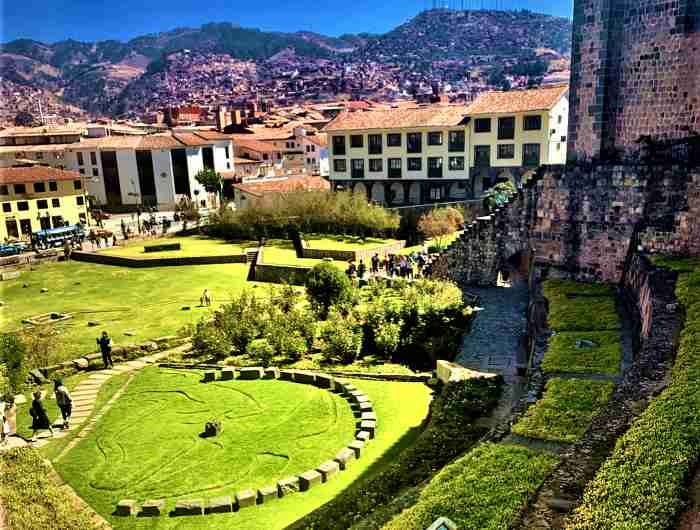
Located in the heart of Cusco, Qorikancha is a historic Inca temple where you can take in the incredible stonework and engineering skills of the Inca empire.
Once known as the “Temple of the Sun”, this site was the most important religious and cultural center of the Inca people.
The temple was built in honor of Inti, the sun god, and it was believed that the walls were plated with gold.
While most of the gold was looted by the Spanish conquistadors during colonization, the structures and the intricate carvings of the temple remain intact.
Explore the temple and observe the large stones that fit together with such precision that even a blade cannot fit between them.
One of the most impressive features of Qorikancha is its unique architecture that blends Inca and Spanish elements.
After the Spanish conquest, the temple was partially destroyed, and the conquistadors used the site as the foundation for the Church of Santo Domingo.
16. Cocachimba Waterfall
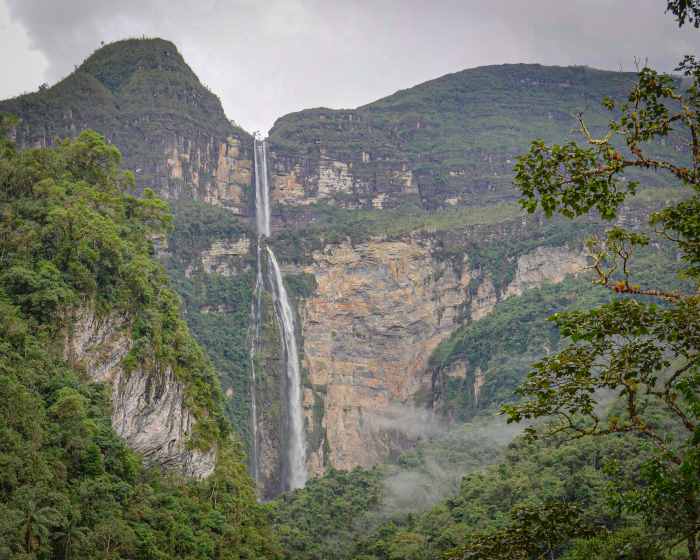
Located in northern Peru, near the town of Gocta, the Cocachimba Waterfall is a truly breathtaking natural wonder.
With a height of 771 meters, it is one of the highest waterfalls in the world, and its sheer size and beauty make it a must-visit destination for any traveler in Peru.
To reach the waterfall, you must first complete a moderate hike through lush forests, home to a myriad of wildlife and plant species.
The path is well-marked, and along the way, visitors can enjoy stunning views of the surrounding mountains and valleys.
Once at the waterfall, the sight is truly awe-inspiring. The powerful rush of water cascading down the cliffs creates a mesmerizing display, and the mist and spray from the waterfall create a refreshing and invigorating atmosphere.
Take a dip in the natural pool at the base of the waterfall, or simply relax and take in the stunning views.
After experiencing the majesty of the Cocachimba Waterfall, continue your journey through Peru by visiting the equally stunning Laguna 69, a picturesque glacial lake located in the heart of the Andes mountains.
17. Laguna 69
This alpine lake is located within Huascarán National Park, surrounded by snow-capped peaks and pristine wilderness.
Reaching the lake involves a challenging but rewarding trek, taking you through lush valleys and rocky terrain.
Once you arrive at Laguna 69’s shimmering turquoise waters, you’ll be struck by its serene beauty.
The colors of the lake change throughout the day, from deep blues to bright greens, making it a photographer’s dream.
Take some time to explore the surrounding area, and you’ll discover unique flora and fauna that are adapted to the harsh mountain environment.
You might spot Andean geese, the rare Andean spectacled bear, or the Andean condor soaring overhead!
Whether you’re an experienced hiker or just looking for a breathtaking natural wonder to add to your adventure, Laguna 69 is a destination that showcases the incredible beauty Peru.
FAQ Famous Landmarks In Peru
What Is The Most Famous Spot In Peru?
Although there are a lot of different amazing and famous landmarks in Peru, the most famous spot in Peru is Machu Picchu
What Is Peru Most Famous For?
Peru is very famous for a variety of things: the Inca history, all the historic ruins in the Peruvian mountains, its food culture, and unique landmarks like the Rainbow Mountain.
But the most famous thing about Peru across the world is still Machu Picchu.
How Did Peru Get Its Name?
The name of Peru today comes from an interpretation of the name of an Inca Chief who lived in this area in the 16th century!
When the Spanish arrived, they met the Chief “Biru” and named the area Biru, or Peru, after him, and the name stuck!
Wrap-Up Famous Landmarks In Peru
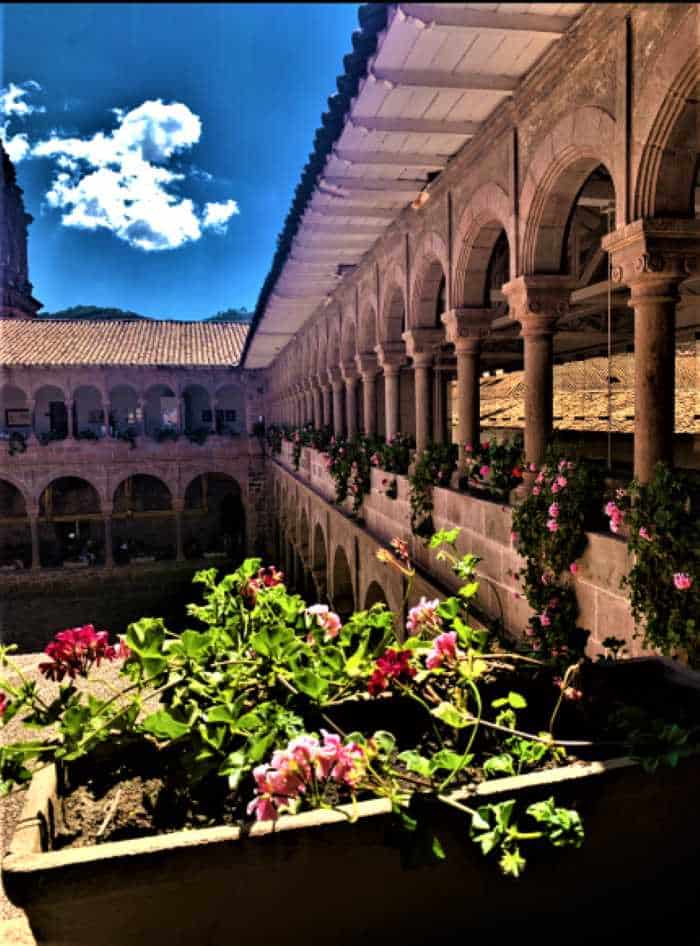
Peru is a true gem in South America that has managed to preserve its rich culture and history while offering breathtaking and unique landscapes.
From the ancient ruins of Machu Picchu to the enigmatic Nazca Lines and the colorful Rainbow Mountain, Peru is a must-see for every traveler.
If you visit only one of these 17 landmarks we’ve covered, you’ll be swept away by the vastness and incredibleness of Peru’s Peru’s wonders firsthand. Which is exactly why we travel, isn’t it?
As the famous explorer Hiram Bingham once said, “The land is one of the most spectacular in the world, and the people are among the most hospitable and friendly!”
Related blog posts:
Hiking The Inca Trail In March? Pros and Cons
Review Inca Trail Trek 4 Days: My Epic Inca Trail Experience

